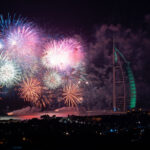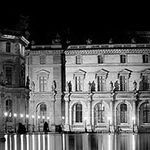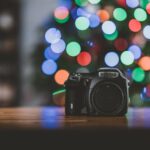Whether you’re just breaking onto the wedding photography scene or you’ve already made a start, it’s important to remember weddings are a BIG responsibility. They are demanding (both physically and mentally), fast-paced, and highly unpredictable. However, most importantly, you only get one shot. There is no redo, so you have to be prepared. To ensure you have the proper gear when you set out, remember these important wedding photography equipment considerations.

photo by Emily Hanna
Lighting
Most weddings take place indoors—and in most cases, dimly lit venues. This is an important aspect to remember when preparing your gear and during the shoot. While you may think you need every accessory under the sun for your camera, a few good lenses and multiple flash units will keep your photography options available no matter where you’re shooting.
Camera
Determining the best camera for your wedding photography depends on a few facts; first and foremost, your budget. However, if money was not option; a good choice would be a full frame body. These cameras offer low-noise capabilities, higher ISO (up to 3200), and you can raise the shutter speed two more stops. Whatever you choose, always make sure your camera is capable of handling efficiently during low light settings.

photo by Ly Thien Hoang (Lee)
Lenses
When picking lenses, you should keep in mind the same low-lighting considerations. Many professionals use a wide aperture (starting around an f/1.2) to create better quality photographs for the softer lighting conditions. However, the 24–70mm f/2.8 lens is used so much it was dubbed the “wedding lens.” Make sure to take a mixture of different lenses, including both zoom and prime options, as well as a wide aperture lens, wide-angle zoom, macro lens, fisheye lens, and if possible, a telephoto. Only you can determine what will work best for you, but this short list will set you up with a nice variety for both the wedding and the reception.

photo by Chụp Ảnh Cưới Đà Lạt
Other Things to Consider
The best motto to follow when determining your wedding photography equipment is to always expect anything and everything to happen. Be prepared for the worst conditions, and don’t forget these extra considerations:
- Backup Camera. Always bring a spare camera (including accessories, if it cannot use the same ones). It doesn’t have to be top of the line or something pristine. The camera just needs to be able to get the job done if something goes wrong with your main equipment.
- Cleaning Supplies. Rain, confetti, dust, anything can happen, so always bring cleaning supplies (e.g., lens cleaner) to keep your gear clean and ready to go.
- Extra Power. Battery packs, batteries, whatever your device uses, your photography kit should include extra power for both your camera and your flashes.
- Tripod. While not a necessity, tripods are great for slower shutter speeds.
- Additional Memory Cards. Make sure you have enough memory to cover the entire event.
- Sturdy Camera Strap
While weddings are one of the most popular and lucrative forms of photography, they also carry a wide array of special concerns. To stay ahead of the game, what essential equipment do you have in your wedding photography supply kit?
Like This Article?
Don't Miss The Next One!
Join over 100,000 photographers of all experience levels who receive our free photography tips and articles to stay current:






Which lens is better: 50mm f1.4 or 75mm f2.0 in Canon DSLR?
Perth, I would say you need to figure it our for yourself. Some people prefer one or the other and it completely is based on how you like things. I personally would go for 50.
Very helpful post, I have Nikon D90 and 35mm f/1.8G, and i want a speed-light to go with it.
I want SB-900 but i am confused. can you please help me with this?
Thanks in advance.
Reading this article reminded me of a clip out of a business writing class I took.
“Unsubtantiated facts”
Avoid including unsubstantiated facts in a business letter or document as these may affect the credibility of the writer and the organization.
While I acknowledge that the author made valid points throughout; some of the opinions that influenced his article slighted several in the business that opt “to go with far inferior optics and less than cutting edge camera design” by choosing an alternate brand.
Other than that a good article. One additional point though… For the bouquet toss one would defiinitely be better off by having a frame rate higher than 3.9 frames/second. More than one bride has balked.
This article is really a joke: too unilateral, too subjective.
I am a loyal reader of picturecorrect, you guys have amazing collection of valuable photography tips, please do the filter more carefully before publish.
Thanks
I am sorry, but “The larger sensors mean more depth of field” stament is absolutely wrong… As a matter of fact it is totally opposite with the same FOV…
Last I checked sensor size has abosolutely nothing to do with DOF. That and the canon optics are far superior is a laugh. You may be a fanboy but that is just a ridiculous statement. Makes you lose credibility. Not to mention, pros only use canon and Nikon??? Wow. I’m a Nikon guy and I find that a bit unrealistic.
“far superior optics and cutting edge camera design” – complete exaggerated rubbish, if anything Nikons lower end lenses are slightly better and both Canon and Nikons Pro lenses are about equal. What about Nikons superior auto-focus and flash systems?
Far superior optics and cutting edge camera design and functions … LOL